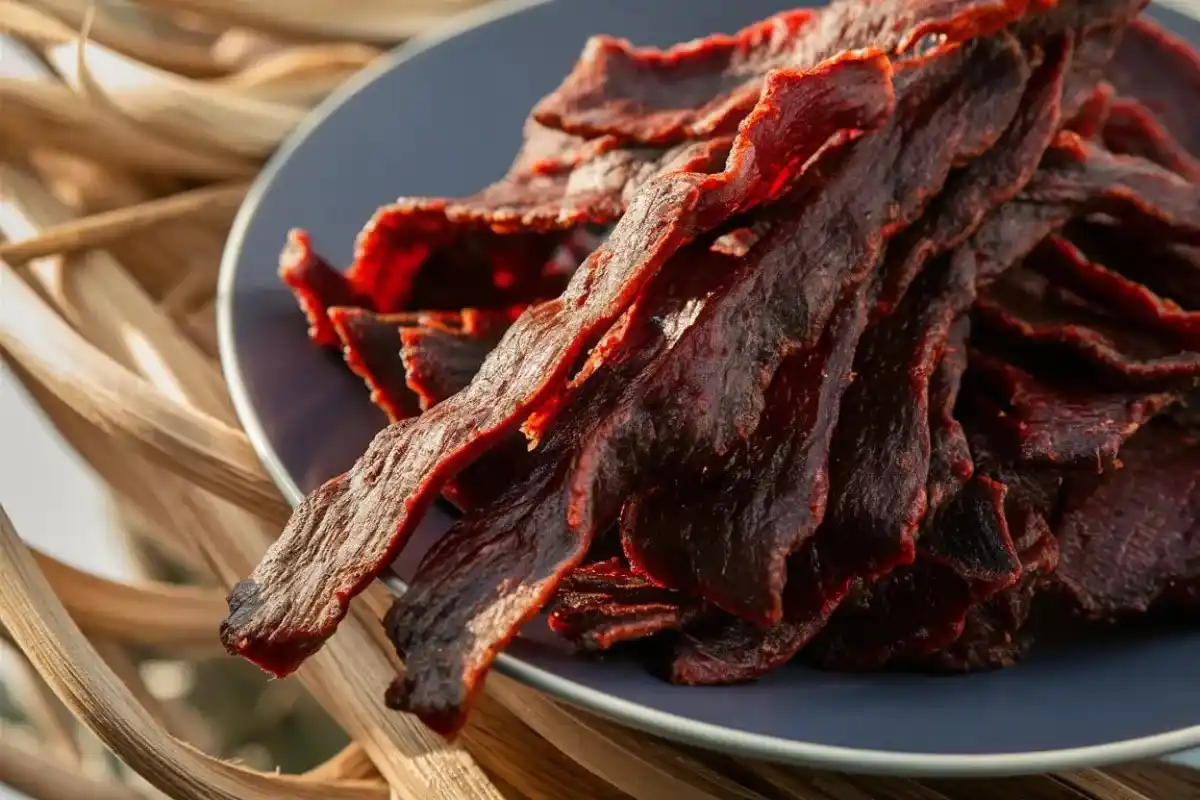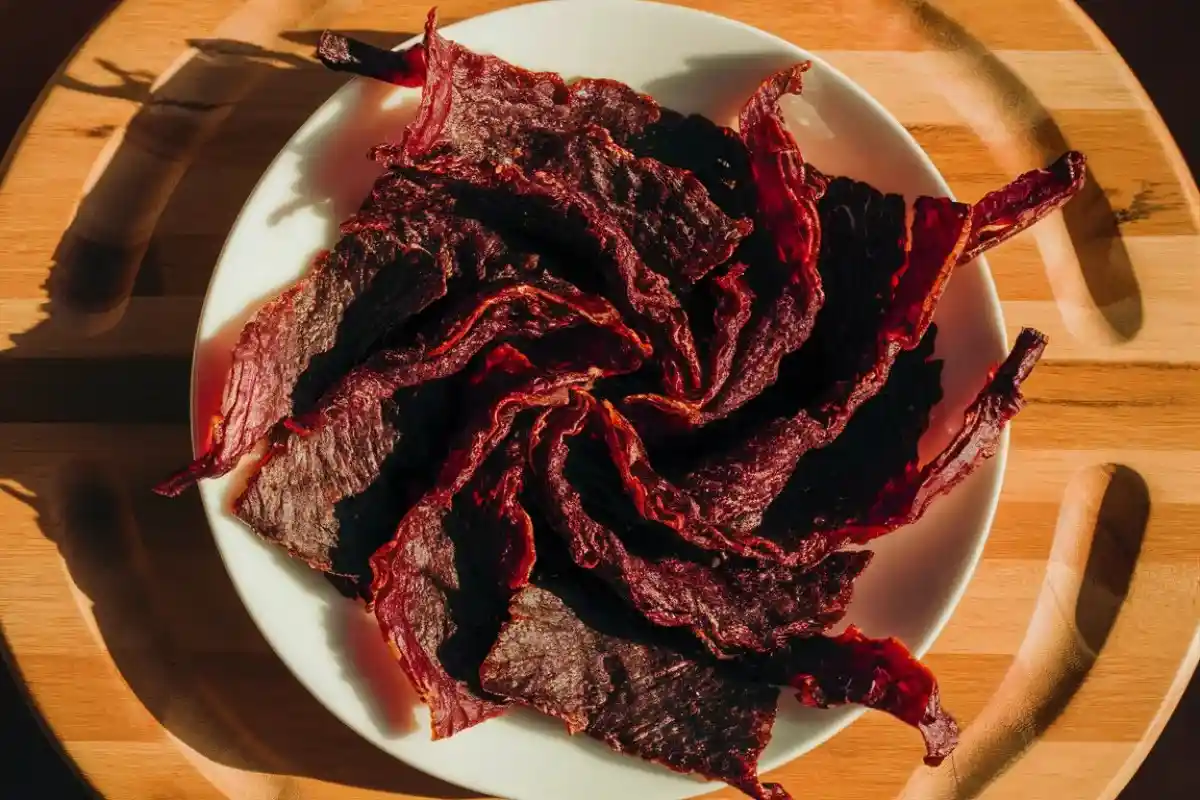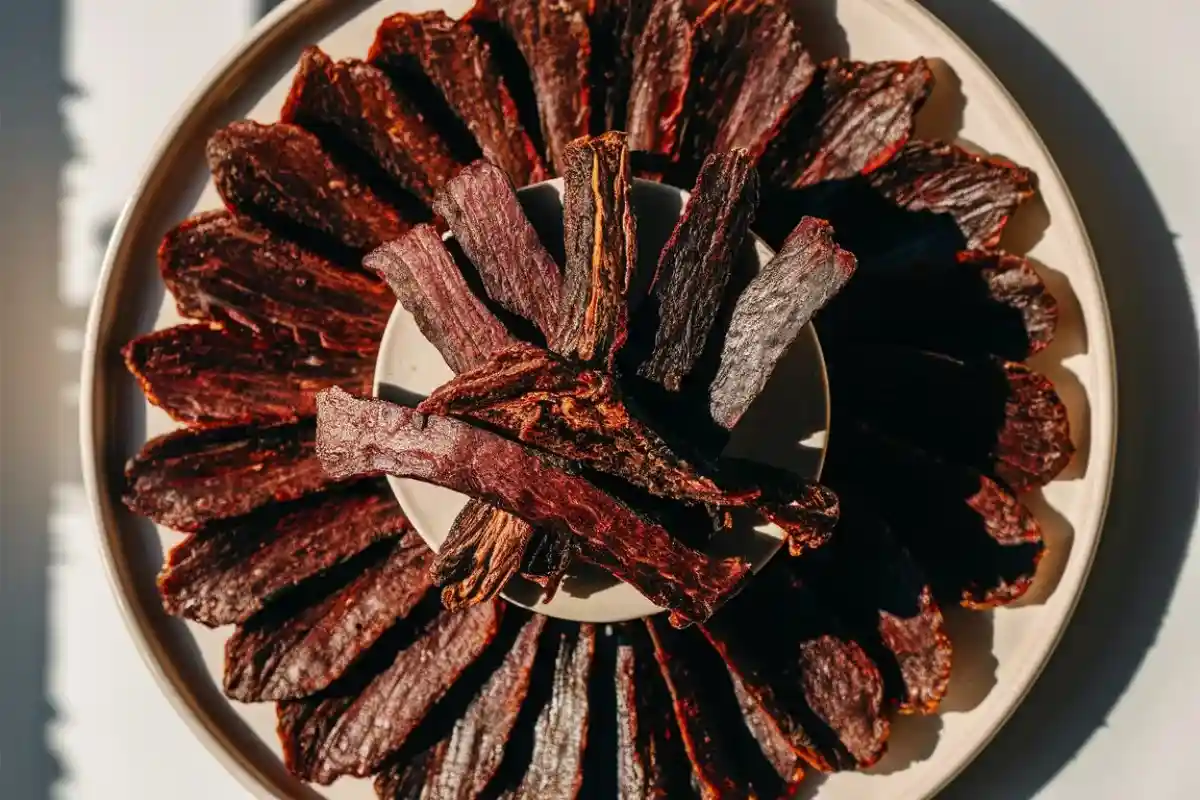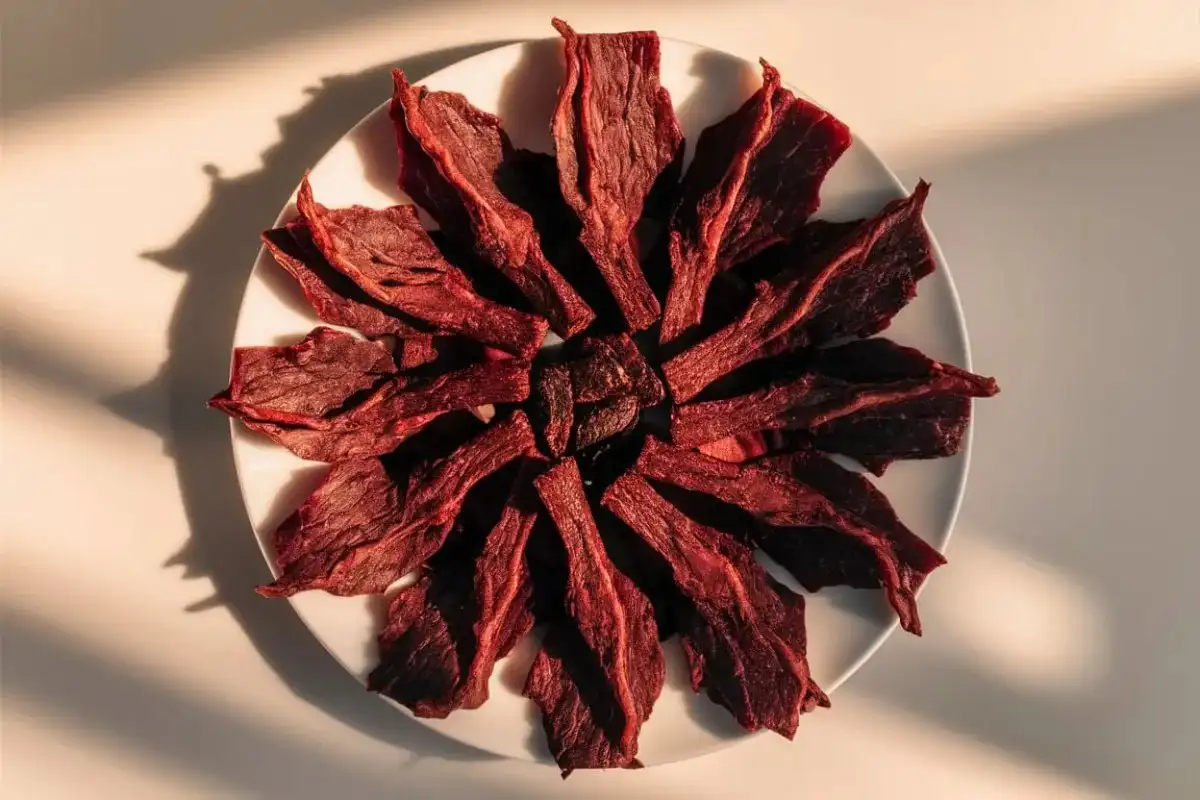Beef jerky is a popular snack known for its long shelf life, but what does rancid beef jerky smell like? Recognizing the smell of spoiled beef jerky is crucial to avoid consuming unsafe jerky and to enjoy it at its freshest. This article will explore the nuances of what rancid beef jerky smells like, the factors contributing to its spoilage, how to detect signs of rancidity, and best practices to ensure your jerky remains fresh and tasty.
What Does Fresh Beef Jerky Smell Like?
To fully understand what rancid beef jerky smells like, it’s helpful to first know the normal, pleasant aroma of fresh beef jerky. Fresh jerky typically has a smoky, savory scent with subtle hints of spices, depending on the marinade or seasoning used. The natural smell of freshly made beef jerky is generally inviting, characterized by a blend of meatiness and spice, whether it includes soy sauce, garlic, black pepper, or even teriyaki. This combination should create a mouth-watering, slightly salty fragrance.
The key characteristic of fresh jerky is its intensity without any sharp or sour notes. A well-prepared jerky smells clean, with no chemical or moldy undertones. This enticing aroma is one of the first indicators that your jerky is still fresh and ready to eat.
How to Recognize What Rancid Beef Jerky Smells Like

When beef jerky goes bad, the first indicator is usually the smell. The odor of rancid beef jerky can be quite distinctive and is often unpleasant. Below are some common descriptors that people use to identify the smell of spoiled jerky:
- Rotten Meat Smell: Rancid jerky often emits an odor similar to rotting meat. This smell is due to the degradation of fats and proteins in the meat, which creates a foul, putrid scent. The smell can be intense and offensive, reminiscent of raw meat that has been left out for too long.
- Sour or Tangy Odor: In many cases, spoiled jerky can develop a sour smell. This could be due to the growth of bacteria or yeast, which produces lactic acid and other compounds. This smell might resemble sour milk or yogurt gone bad.
- Musty or Moldy Notes: If the jerky has been exposed to moisture, it may develop a musty or moldy smell. This odor is usually a sign that mold is present, which is often accompanied by visible mold growth. Musty smells are typically associated with damp environments and can indicate that the jerky has been improperly stored.
- Chemical or Metallic Undertones: Sometimes, spoiled jerky can have a sharp, almost metallic smell. This may occur when the preservatives in the jerky break down or when oxidation occurs in the fats, leading to a chemical-like odor.
These distinctive odors are strong indicators that the beef jerky has gone rancid and should not be consumed. Any deviation from the jerky’s original scent profile suggests spoilage and warrants disposal.
Causes of Spoilage: Why Does Beef Jerky Smell Rancid?
Understanding the causes of rancidity in beef jerky can help you prevent it. Several factors contribute to the development of off-smells and flavors:
1. Improper Storage Conditions
Beef jerky should be stored in a cool, dry place away from direct sunlight. Exposure to heat, humidity, or air can accelerate the spoilage process. When jerky is stored in a warm environment, the fats can start to oxidize, leading to rancidity. Likewise, exposure to moisture can promote mold growth, resulting in musty smells and potentially harmful microorganisms.
2. Exposure to Moisture
Moisture is one of the leading causes of spoilage in dried meat products like jerky. When beef jerky is exposed to air that contains high humidity, it can absorb moisture, which creates an ideal environment for bacterial growth and mold formation. This is particularly problematic if the jerky has not been vacuum-sealed or stored in an airtight container.
3. Oxidation of Fats
Beef jerky contains fats that, even in small amounts, can oxidize over time. This oxidation process, which is a chemical reaction between fat and oxygen, produces unpleasant flavors and odors. Oxidized fats are often described as having a “paint-like” or “soapy” smell. This is a common cause of the rancid smell in jerky that has been exposed to air for extended periods.
4. Breakdown of Preservatives
Commercial beef jerky often contains preservatives such as sodium nitrite or other curing agents designed to extend its shelf life. Over time, however, these preservatives can lose their effectiveness, especially if the jerky is stored improperly. When preservatives break down, bacteria and mold can proliferate, leading to spoilage.
5. Extended Shelf Life Beyond Expiration
Even with proper storage, jerky will eventually spoil if kept for too long. Most commercially produced jerky has a “best by” date, indicating how long it should remain at peak quality. After this date, the risk of spoilage increases, and the jerky may develop rancid smells and off-flavors.
Understanding the answer to “what does rancid beef jerky smell like” involves knowing the factors that contribute to its spoilage. Improper storage, exposure to moisture, oxidation of fats, and breakdown of preservatives can all affect the smell of jerky. Using natural preservatives for meat can help extend the shelf life of your beef jerky and maintain its freshness.
Preventing Rancidity: How to Avoid That Rancid Beef Jerky Smell

To extend the life of your beef jerky and prevent it from becoming rancid, it’s important to store it correctly. Here are some best practices for keeping your jerky fresh:
- Use Airtight Containers: Always store your beef jerky in an airtight container or resealable plastic bag. This prevents air and moisture from entering, which can cause spoilage. Vacuum-sealed packaging is the best option for long-term storage.
- Store in a Cool, Dry Place: Keep your jerky in a location that is consistently cool and dry. A pantry or cupboard away from the stove, oven, or other heat sources is ideal. Excessive heat can cause the fats in the jerky to oxidize, while moisture can lead to mold growth.
- Avoid Exposure to Light: Light, particularly sunlight, can cause jerky to degrade faster by promoting oxidation. Store your jerky in a dark place or use opaque containers to limit light exposure.
- Freeze for Longer Storage: If you plan to store beef jerky for an extended period, consider freezing it. Freezing jerky can extend its shelf life by several months, as it prevents the growth of bacteria and mold. Make sure to use freezer-safe, airtight packaging to avoid freezer burn.
If you’re wondering what does rancid beef jerky smell like, you should also consider how proper storage can prevent these unwanted odors. Using airtight containers, storing in a cool, dry place, and avoiding light exposure are key steps to keep your jerky fresh.
How to Detect Rancid Beef Jerky
To ensure that your jerky remains safe to eat, it’s important to regularly check for signs of spoilage. Here are the key steps to help you determine if your jerky has gone bad:
- Conduct a Smell Test: The first and most reliable test is to smell the jerky. If it smells sour, musty, or like rotting meat, it’s likely rancid. A fresh batch of jerky should have a pleasant, meaty aroma.
- Visual Inspection: Look closely at the jerky for any signs of discoloration or mold. Spoiled jerky may have white, green, or black spots, which indicate mold growth. If the jerky has an unusually dark or uneven color, it may also be spoiled.
- Feel for Texture Changes: Spoiled jerky can become either excessively dry and brittle or unusually moist and sticky. If the texture seems off, it’s best to avoid consuming it.
- Taste a Small Piece (if Smell and Look Are Normal): If there are no visual signs of spoilage and the jerky smells okay, try tasting a small piece. If it tastes off or has a metallic, bitter, or unusual flavor, it’s best to discard it.
Exploring Alternative Uses for Old or Suspect Jerky
If you have beef jerky that is nearing the end of its shelf life or you suspect it may not be at its best, there are still some creative uses for it that don’t involve eating it directly:
- Use as a Flavor Enhancer: Jerky can be used to add flavor to soups, stews, or broths. Even if it has lost some of its freshness, jerky can still impart a rich, smoky flavor to dishes.
- Grind It Up for Seasoning: Dried jerky can be ground into a powder and used as a seasoning or rub for meats. This is a great way to salvage jerky that may be slightly stale but still edible.
- Make Jerky Chips: You can slice the jerky into very thin strips and dehydrate it further in the oven to make crispy jerky chips. These can be used as a topping for salads or soups.
How to Make Your Own Jerky to Ensure Freshness

One of the best ways to ensure your beef jerky is fresh and free from unwanted odors is to make it yourself. Homemade beef jerky allows you to control the ingredients, the quality of the meat, and the storage conditions. Here are some tips for making your own jerky at home:
- Choose Lean Cuts of Meat: Select a lean cut of beef, such as flank steak or sirloin, to minimize the fat content, which can cause rancidity. Trim any visible fat before marinating and drying the meat.
- Marinate with Preservative Ingredients: Use ingredients like salt, soy sauce, vinegar, or citrus juice in your marinade. These not only add flavor but also act as natural preservatives.
- Dry the Jerky Thoroughly: Use a food dehydrator or an oven set at a low temperature to dry the meat completely. Proper drying is crucial to preventing moisture from remaining in the meat, which can lead to spoilage.
- Store in Small Batches: Once the jerky is made, store it in small, airtight containers or vacuum-sealed bags. Only open what you plan to eat within a week to avoid unnecessary exposure to air.
By making your own beef jerky, you can avoid many of the pitfalls of commercial production and ensure that your jerky is always fresh and flavorful.
Tips for Buying High-Quality Beef Jerky
If you prefer to buy beef jerky rather than make it yourself, here are some tips for choosing the highest quality product:
- Check the Ingredients List: Look for jerky made with natural ingredients and minimal additives. Avoid products with high sugar content or artificial preservatives.
- Choose Smaller Batches: Smaller producers often make jerky in smaller batches, which can mean a fresher product. Check the packaging date and choose the most recent one available.
- Inspect the Packaging: Ensure that the packaging is airtight and free of any punctures or damage. Vacuum-sealed bags are the best option for maintaining freshness.
- Smell Before You Buy (If Possible): At some farmers’ markets or specialty stores, you might have the option to smell the jerky before purchasing. A good, fresh jerky should have a strong, pleasant aroma.
Conclusion: Keeping Your Beef Jerky Fresh
Beef jerky is a versatile and convenient snack that, when stored properly, can last for months. However, it’s important to recognize the signs of rancidity to avoid consuming spoiled jerky. By understanding what does rancid beef jerky smell like and the factors that cause spoilage, you can take steps to ensure your jerky remains a delicious and safe snack. Remember to store it properly and always check for signs of spoilage to enjoy your jerky at its best.
To enjoy your beef jerky at its best, store it in a cool, dry place, use airtight containers, and keep an eye on its expiration date. Whether you make your own or buy from a trusted source, following these best practices will ensure that your beef jerky remains a tasty and safe snack.

